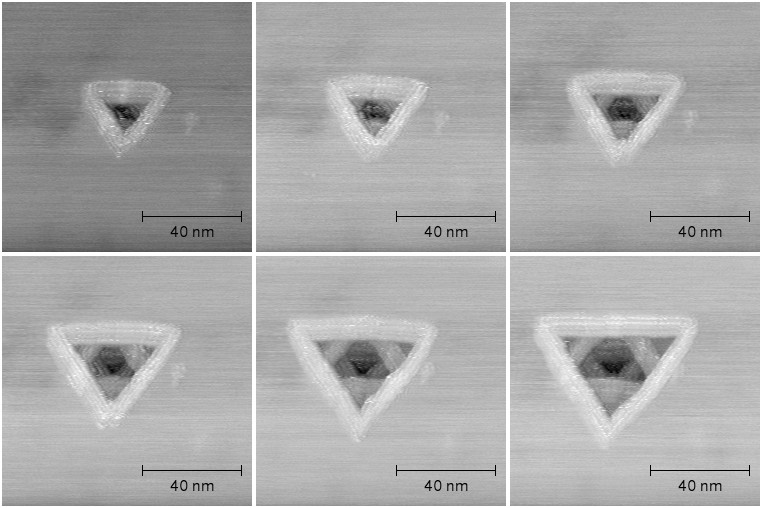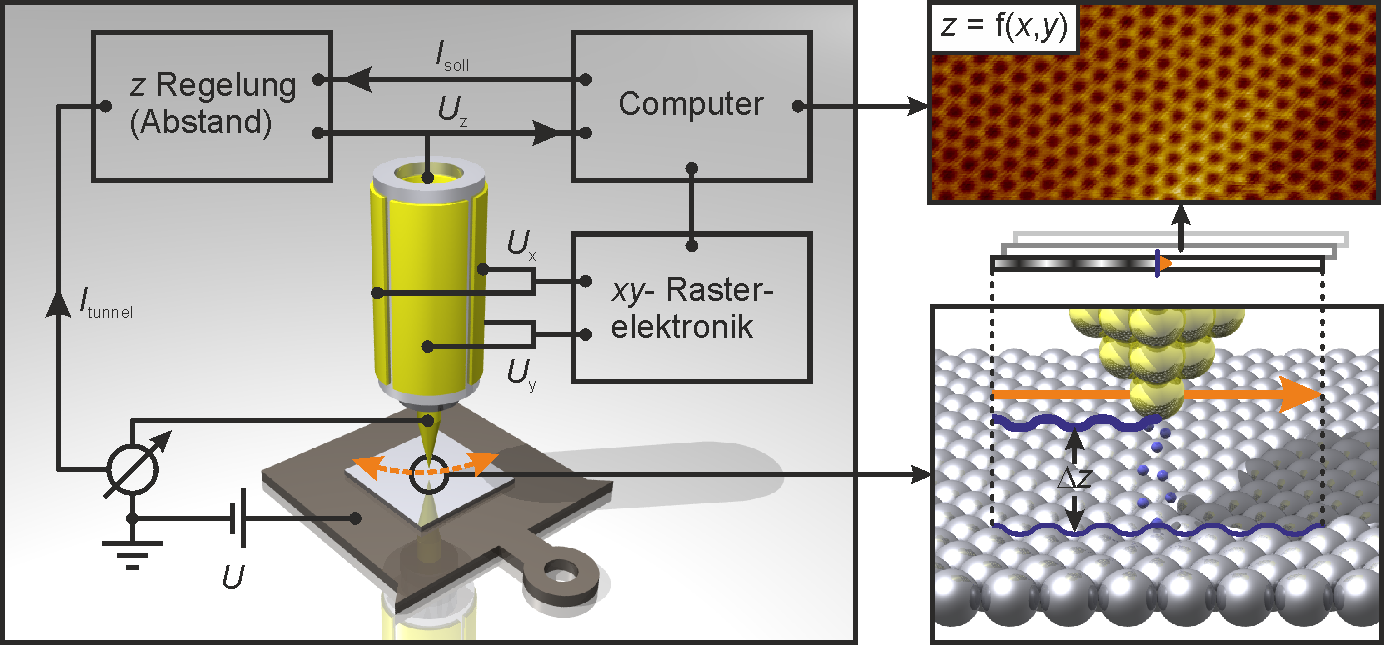

I am assisting the advanced practical courses in every summer semester. In the winter semesters, my colleague Jens Wiebe is the course assistant.
More information about the practical courses can be found on the official website of the MIN faculty (University of Hamburg):
Fortgeschrittenen-Praktikum (in German)
In this experiment you will learn to use a scanning tunneling microscope. You will directly “see” the configuration of the atoms on the surface and effects of electron wave interferences at the surface of different layered materials. Moreover, you will use the tip of the scanning tunneling microscope as a tool in order to produce nanometer sized and one atom layer deep triangular shaped holes in the surface, and observe and study the growth of these surface defects over time.
Nowadays scanning tunneling microscopy is one of the standard tools in surface science, which is the science of the surfaces of solid state materials. It is the only technique which is able to deliver real space images of the distribution of the electron states in conductive materials with sub-nanometer spatial resolution. It can thus help us to solve some of the most urgent problems of modern solid state research, e.g., finding the microscopic origin of high temperature superconductivity, resolving the local electronic structure of new phases of matter like topological insulators, or designing novel concepts for transistors which may be used in future information technologies.
Important: Note that you have to visit the lecture "Physik IV" before attending this practical course!
 (courtesy of J. Wiebe, University of Hamburg)
(courtesy of J. Wiebe, University of Hamburg)
In diesem Experiment lernen Sie die grundlegende Funktionsweise und Handhabung eines Rastertunnelmikroskops kennen. In der Rastertunnelmikroskopie rastert eine metallische Spitze über einer zu untersuchenden Probenoberfläche, wobei sich Spitze und Probe in einem elektrischen Tunnelkontakt befinden. Eine angelegte Spannung resultiert in einem Tunnelstrom, der sehr stark vom Abstand zwischen Spitze und Probe abhängt. Um eine hohe Auflösung von wenigen Pikometern (10-12 m) zu erreichen, bedarf es daher einer sehr genauen lateralen und vertikalen Positionierung der Tunnelspitze über der Probenoberfläche. Dieses Problem wird mit keramischen Piezo-Stellelementen gelöst, die sich je nach der an ihnen angelegten Spannung sehr kontrolliert verformen lassen.
Die Kalibrierung des Messaufbaus in einem Experiment ist unbedingt notwendig, um physikalische Größen quantifizieren zu können. Im Verlaufe dieses Kurzversuchs nehmen Sie zunächst atomar aufgelöste Bilder einer frisch präparierten HOPG-Oberfläche auf. Die beobachtete Gitterstruktur analysieren und diskutieren Sie dann mittels Linien-Profilen und 2D-Fourier-Transformationen, bevor Sie durch einen Vergleich der gefundenen Gitterparameter mit Literaturwerten eine Kalibrierung des Rastertunnelmikroskops bzgl. der Auslenkung der Spitze in Funktion der an den Stellelementen angelegten Spannung vornehmen.
